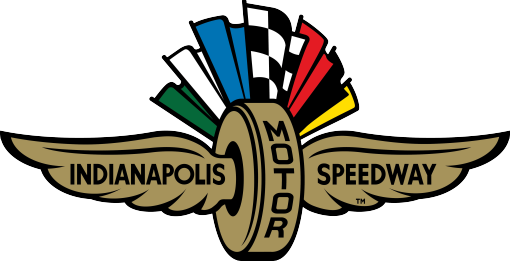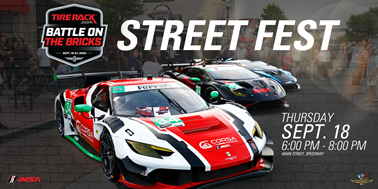Note: This continues a series of interviews with Indianapolis 500 legends about the favorite car they drove in “The Greatest Spectacle in Racing” and why, in their words. “My Favorite Car” interviews will appear at IMS.com on Mondays through the spring. Read other installments of "My Favorite Car" here.
Q: What was your favorite car you drove in the Indianapolis 500?
Rick Mears: Usually, your favorite is the last one you’ve won with. If you’ve won the race, obviously the cars were pretty good, no matter what race it was. As time goes on, what you won with one time was the latest, greatest thing. A few more years down the road, that car kind of becomes obsolete. You’ve upgraded; you’ve got a latest, greatest machine. It’s always a moving target. For me, Indy and the four wins, for several reasons I’d have to take the fourth one (1991 car). The first one, the PC6 (1979), it was the last flat-bottom car, I think, to win at the Speedway. It was a year-old car. I stayed with it instead of going to the PC7 like my teammate, Bobby (Unser), had because he had done all the development work on it, and I was a rookie. Roger (Penske) gave me the option. He said, ‘Hey, you’ve been racing the 6,’ and we had been running well with it, and he said, ‘You’ve got the choice: You can stay with it if you’re comfortable with it, or, I know you haven’t have a lot of time with it, you can go with the 7 for Indy.’ I chose to stay with the PC6, something I knew. I always loved the look of that car. I’ve always thought it was one of the best-looking cars going. Just the shape of the chassis, low profile. It was a good race car, all around, for me. It has a special place, especially getting my first win at Indy. Then I would have to jump to the PC20, the fourth win. It was just a great car. It worked so well. We struggled a little bit early on, but not a big struggle. There was no sense in pushing if you’re not where you want to be yet. You want to give the guys the opportunity to make changes, follow the track and see where you’re at, keep an eye on your opponents and who’s going to be the target that you’re going to have to gear up to have a shootout with at the end. That’s the normal game plan.
Q: How did the car run during the race?
RM: The car went loose at one point. I was just hanging on until we got some more stops under our belt to make some changes. At one point, Michael (Andretti) thought he was going to put a lap on me. He didn’t know I was watching him. He was getting closer, and I was picking it up. He wasn’t going to put a lap on me. Before he got a chance to get that close to me, we got a yellow, which kept it from happening. He didn’t get the opportunity that he thought he had, but he actually didn’t have it (laughter). I just kept going until we got more stops and tightened the car up to where we wanted. That whole day went according to the book. The 20 was a great car. From the (PC)17 all the way, Nigel Bennett did a great job on them. He was so good at packaging and repackaging and detail work, just massaging what we had and taking it to another level every year. They were just great race cars.
Q: Was the PC20 more responsive to changes than other cars you drove at Indy?
RM: It’s difficult to say because it’s all relative. Obviously, I’ve had some cars that did not respond to change. That’s not good. Almost all of Nigel’s cars did. They responded pretty well if you were in the ballpark. If you didn’t happen to be in the ballpark, they may not respond as well as they should or could. Yes, that car was responding very well. How do I gauge it compared to the others? It kind of depends where you’re starting from. If you’re close, you don’t need as much change to get it where you need it. Sometimes if you’re further off, it may take more changes, and it seems like it’s not responding well. But it gets there. I did have cars over the year that did not respond well, no matter what you did. Those you try to stay away from. The 20 was good most all month.
Q: Sure was. You won the pole in it, too.
RM: And that was after having a crash. I think the same day of the crash, we got the backup car out after I got back from the hospital and went out. I couldn’t even push the throttle down. We had to take all of the throttle return springs out because it was like sticking a knife in my foot. But I wanted to get back on the horse, and I knew it would be good for me and for the team. But it’s such a credit to the team, to pull the backup car out. I went out it with it, did one shakedown, came in. They looked at it, and I went back out and stood on it. And I could tell within a few corners, it was going to be right there. It hurt when I moved my foot, and I knew the car would make it flat for a lap. So, I just put it flat and left it so I wouldn’t have to move my foot, and we ended up running the quickest we had all month, in the backup car after a crash. That was a good sign. It helped all of us, in general. Then to turn around within a day or two to qualify on the pole with it! But that race (Indianapolis 500, in general), I’ve had it go all directions. You get out of the car at the end of Carb Day, and say: ‘Guys, this car is so good, I don’t want you to even wipe it off. Don’t touch it. It’s so good. Just leave it alone. Don’t change anything.’ And I start the race with it and within 10 laps it’s so loose I can’t drive the thing because the track’s different, the weather’s different, turbulence, everything. I’ve had them come out pretty close sometimes, but then I’ve had them come out and be the exact opposite of what you thought it would be. So, it’s always a guessing game. That’s Indy. That’s what it’s all about. You’ve got to be ready for change, and the car has got to be able to respond. That car did.
Q: What other adversity did you cope with on Race Day in 1991?
RM: (The car) was never really far off, but part of losing a little ground there when Michael almost put me a lap down, the car was a little bit edgy. But also I was dealing with not being able to use my right foot on the throttle. I drove basically the entire race with my left foot on the throttle. Ten laps into it, every time I would move my foot, it was just a hot knife. I tried everything to relieve the pain in the side of the foot because I fractured some bones in that crash. I couldn’t do it. The only way it would quit hurting was if I’d lift. I finally reached over with my left foot, with my toes, and put it on top of my right foot and pushed the throttle down with my left foot. Then I could pull back on my right leg and take the pressure off the side of my foot. That was the only thing I found to handle the pain. This was 10, 15 laps into the race. I’ve got all day to go yet. So, when you’re doing something that out of the ordinary, you’re not ready to run 105 percent. You’ve got to keep a little up your sleeve in case you make a mistake. So, that was part of taking it easier, which I’ve always done in the first half of these races, anyways. The first half is just getting to the second half. The second half is getting to where you need to be if you’re not already there. As I got comfortable running with my left foot, I could pick the pace up. It was more of a natural reaction. I started working with the car and the guys and the track and kept an eye out on who was quick.
Q: What do you remember from the latter stages of that race in 1991?
RM: You never want to show all of your cards until after the last stop. If somebody is leading and thinks they have the field covered, they won’t take the chance of making a change that could go the wrong way or tip it over and be too much. At that point, Michael thought he still had me covered. After that last stop, OK, now it’s showtime. Now we’ve got to go. When it came down to those restarts between us, I stumbled a little in traffic. A couple of lapped cars on restarts, and I had to pedal it. It was no fault of theirs. You draft up behind a guy and jump out at the last second. Who was it? I can’t remember if it was John Andretti or (Al Unser) Junior, but just as I got to him and jumped out to go by, he jumped out to go by the car that was in front of him. He wasn’t blocking me; it was just a timing deal. So, I had to pedal the car to keep from hitting him. Now we’re three-abreast, and Michael has a hole in the air the size of a bus. He’s always quick on restarts; I knew he was going to be. So, he had a big run at me, and as I went by the other two cars, he was coming full steam at me. You’re not up to speed yet on a restart, so the groove is much wider than it would be at full speed. So, I just chose to take the bottom and give him the long way around, to add some footage to his line to try to stay as close as I could to him coming off of (Turn) 2. That’s basically what happened. I got the draft and everything on the next lap and was able to do the same thing back to him. At that point, on that restart, I had already switched back to the right foot (on the throttle) because it was showtime, and now we had to focus and make no mistakes. I didn’t want to get caught out, reflex-wise, because I was doing something I don’t normally do. Adrenaline takes over; you don’t feel the pain. It goes away, and it’s time to go.
Q: Has your affinity for the ’91 car grown because of what you had to do with your left foot to drive it on Race Day and because of the battle you had with Michael Andretti while driving it?
RM: Absolutely. That’s why I’ve always said of the four wins, the fourth one was most gratifying. A lot of people expect you to say you’re first one is your favorite. My first one has a spot because it was my first. But it was so early in my career that I didn’t appreciate it as much as I did later on. Don’t get me wrong: I appreciated the heck out of it. But I didn’t dream of going to Indy – that was way out of my league. It’s not like it was something I grew up living with. I didn’t understand the history of Indy and what it meant as I did later on in life. You get a little older and a little wiser. It (first win) came so quick, it was like: ‘Oh, cool, we won! Let’s try and do it again.’ Then as you get older and wiser, you look around and you start to realize there are a lot of guys who have never won this race. What are the odds of me winning it again? So, the importance of it grows even more. With each win, I understood the meaning and history of the Speedway. One of the other things that set the fourth win off was I got to have the shootout, which I never had. That was what I always geared up for. That was part of the race plan, gearing to be ready and knowing who you’re going to have the shootout with at the end, and to try to be able to come out on top. Of the four wins, that’s the only one that boiled down to the shootout. So, that’s the way you like to win them. That’s the gratifying way. Plus, my age, and I didn’t know how much longer I was going to be running. As it turned out, I only ran one more year. So, at that age you never know if you’re going to get another opportunity to win it or not. The car was so good. I could deal with the problem with my foot and still keep in touch. I could still work with the guys, and the car responded to changes to get the car to where I knew it was really good and I didn’t have to show it yet. Then after the last stop, we could just walk away from Michael after we got by – the car was so good. In that respect, it’s got to be one of my favorites.
Facts about Rick Mears’ 1991 Indianapolis 500 car:
Car name: Marlboro Penske/Chevrolet Indy A
Car number: 3
Team: Team Penske
Started: 1st (224.113 mph)
Finished: 1st
Laps Completed: 200
Laps Led: 30
Status: Running
Rick Mears career ‘500” starts: 15 (1978-92)
Visit IMS.com for tickets to the 104th Indianapolis 500 presented by Gainbridge, GMR Grand Prix and all other Month of May activities at IMS.




